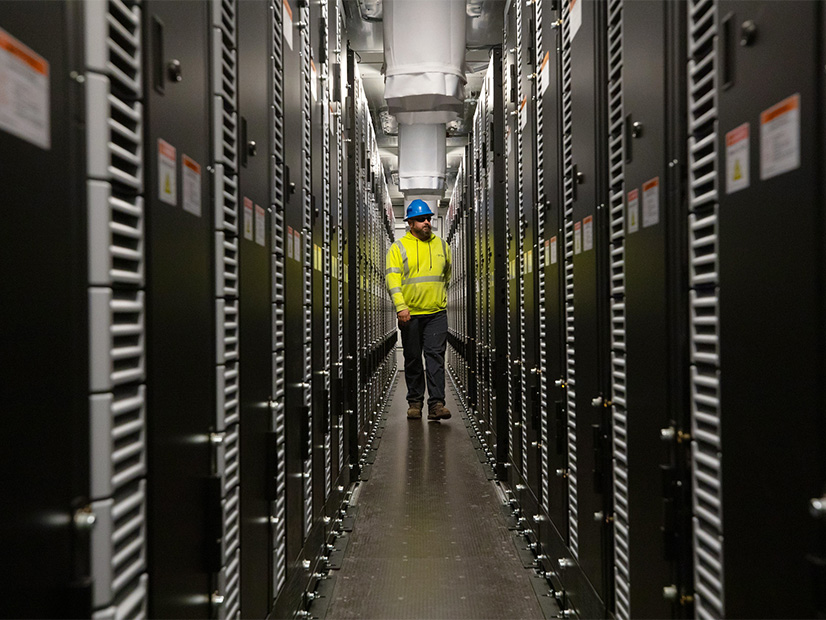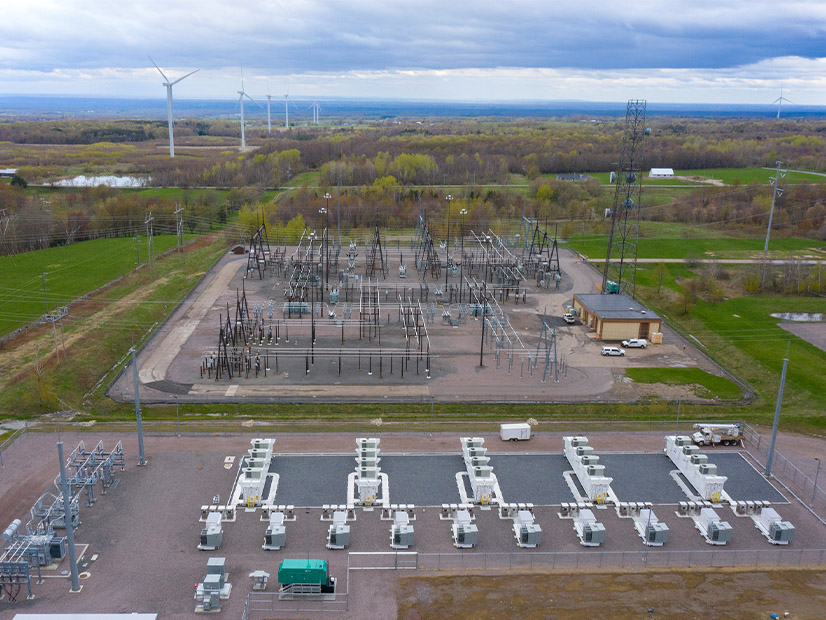
A review has found no sign so far of environmental damage or health risks from three battery energy storage fires in New York state in mid-2023.
A state review has found no sign so far of environmental damage or health risks from three battery energy storage fires in New York in mid-2023.
State officials said Dec. 21 that analyses of air, soil and water data collected in the days after the fires do not show harmful levels of toxic substances or significant off-site migration of contaminants. No injuries were reported, they said.
Gov. Kathy Hochul (D) in late July convened a fire safety working group to reduce the likelihood of fires in utility-scale battery energy storage systems (BESS) and ensure the safety of emergency personnel who respond to BESS fires.
Thursday’s report is the first announced result of that effort. On-site assessments of BESS facilities and reviews of fire codes will continue into early to mid-2024. Fire code recommendations are expected to be released for comment in the first quarter.
The task force was created after three BESS fires within two months in three different parts of the state. Lithium-ion battery fires are difficult to extinguish and can emit toxic smoke.
There were no known injuries in the three BESS fires, but they came as battery fires were taking a terrible toll in New York City. Seventeen people have been killed and 124 injured in 239 blazes this year through Nov. 15.
The New York City fires are being caused by micromobility batteries, which are entirely different from grid-scale batteries. But both use lithium-ion technology, and they are sometimes conflated in the public mind. (See Battery Storage Developers Bump Against Perception of Risk.)
In the wake of this, numerous municipalities statewide have proposed or enacted BESS moratoria in 2023.
Meanwhile, the state Public Service Commission is in the late stages of reviewing a proposed expansion of the state’s Energy Storage Roadmap from 3 GW to 6 GW installed by 2030. Many more gigawatts of capacity will be needed in the 2030s to supplement intermittent renewables.
With storage forming an indispensable part of New York’s clean energy strategy, a large-picture review of safety practices became a pressing need.
“As we continue to advance New York’s clean energy transition, maintaining this safety is of the utmost importance,” Hochul said Thursday as she announced the first results of that review. “Thankfully, the Working Group’s analysis shows no notable lasting impacts on the health or safety of the first responders or the communities they serve.”
Hundreds of pages of data shared with NetZero Insider show an extensive array of tests performed at the three fire sites, with variations due to circumstances of the fires and conditions at the sites.
For example, groundwater sampling was not performed at the site of the first fire, in East Hampton, because there was no sign of soil contamination by lithium or any of the other 25 metals that were targeted in testing.
Groundwater also was not tested at the site of the second fire, in Warwick, because no water was used in firefighting efforts. But the nearby school district performed surface sampling in buses and facilities, and that came back negative.
Testing is not complete at the site of the third fire, a 22.5-MW solar-storage facility in Chaumont.
This fire drew the largest state response, with spill response teams, advisors, environmental law enforcement personnel, infrared-capable drones and air quality monitors sent to the rural area near the Canadian border.
Over five days, large volumes of water were pumped onto the fire and adjacent equipment, leading neighbors to worry about their wells.
The initial round of testing in 11 wells used for drinking water came back negative for fire contaminants. Results are expected in early January for tests on follow-up samples collected in early December. Collection of soil samples has been delayed until the damaged equipment is removed from the site.
Air testing during the fires showed low levels of certain toxic substances.
Carbon monoxide and hydrogen cyanide were present within a meter of the burning battery containers in Warwick but not outside the fence line. At the Chaumont fire, trace amounts of carbon monoxide and volatile organic compounds were detected.


